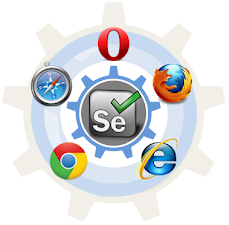AI for Beginners: Definition, Tools & Real-World Examples
Artificial Intelligence (AI) is one of the most transformative technologies of our time, revolutionizing industries and changing the way we live and work. While it might seem daunting for beginners, this guide breaks AI down into manageable concepts, highlights beginner-friendly tools, and explores real-world applications that demonstrate its immense potential.
What is AI?
AI refers to the simulation of human intelligence in machines that are programmed to think, learn, and make decisions. Unlike traditional computing systems, which follow predefined instructions, AI systems can process large amounts of data, identify patterns, and make autonomous decisions.
Key Features of AI
-
Learning Capabilities: Machines learn from data using algorithms like Machine Learning (ML) and Deep Learning.
-
Reasoning and Decision-Making: AI can evaluate information, make predictions, and provide solutions.
-
Perception: AI enables systems to interpret images, sounds, and natural language (e.g., speech recognition).
-
Automation: Automates repetitive tasks, enhancing efficiency and productivity.
The Evolution of AI
AI’s journey began in the 1950s, progressing from basic logic-based systems to today’s advanced neural networks. Key milestones include:
-
1956: The term "Artificial Intelligence" was coined at a Dartmouth Conference.
-
1997: IBM’s Deep Blue defeated chess champion Garry Kasparov.
-
2011: IBM Watson won the quiz show Jeopardy! against human contestants.
-
2016: Google’s AlphaGo defeated the world champion in the board game Go.
-
2022: Generative AI tools like ChatGPT and DALL·E 2 gained global attention.
Why Learn AI?
High Demand for AI Skills
Organizations are leveraging AI to gain competitive advantages, creating a surge in demand for skilled professionals.
Career Opportunities
AI expertise opens doors to careers in data science, robotics, software engineering, and beyond.
Solving Real-World Problems
From predicting natural disasters to improving healthcare outcomes, AI is at the forefront of innovation.
Accessible Learning Resources
With beginner-friendly tools and online courses, learning AI is easier than ever.
Types of AI
-
Narrow AI (Weak AI):
-
Performs specific tasks with high efficiency.
-
Examples: Virtual assistants like Siri and Alexa, recommendation systems.
-
-
General AI (Strong AI):
-
Hypothetical systems that possess human-like intelligence and can perform any intellectual task.
-
-
Super AI:
-
A theoretical stage where AI surpasses human intelligence. Though not yet realized, it raises ethical concerns about control and usage.
-
Beginner-Friendly Tools for Learning AI
1. Google Colab
-
What It Does: A cloud-based platform for coding in Python.
-
Why It’s Beginner-Friendly: Preloaded libraries and free access to GPUs make it ideal for AI experiments.
2. TensorFlow
-
What It Does: Provides a comprehensive framework for Machine Learning and Deep Learning.
-
Why It’s Beginner-Friendly: Simplified APIs guide users through model building and deployment.
3. PyTorch
-
What It Does: An open-source framework known for its dynamic computation graphs.
-
Why It’s Beginner-Friendly: Ideal for prototyping AI models.
4. AI Playground
-
What It Does: Interactive platforms for experimenting with pre-built AI models.
-
Why It’s Beginner-Friendly: Allows users to explore AI concepts without coding.
5. IBM Watson Studio
-
What It Does: Offers tools for building AI solutions in natural language processing, computer vision, and more.
-
Why It’s Beginner-Friendly: Provides a visual, drag-and-drop interface.
Real-World Applications of AI
AI in Healthcare
-
Disease Detection: AI models analyze medical images to detect diseases like cancer.
-
Drug Discovery: AI accelerates the discovery of new medications by simulating chemical interactions.
AI in Education
-
Personalized Learning: Adaptive platforms like Khan Academy tailor lessons based on student progress.
-
AI Tutors: Virtual assistants provide 24/7 support for students.
AI in Finance
-
Fraud Detection: Identifies unusual transaction patterns in real time.
-
Robo-Advisors: Uses algorithms to offer personalized investment advice.
AI in Transportation
-
Autonomous Vehicles: Companies like Tesla use AI for self-driving technology.
-
Route Optimization: AI-powered apps like Google Maps predict traffic patterns to provide optimal routes.
Step-by-Step Guide for Beginners
-
Understand the Basics
-
Read introductory material or take free online courses to learn key concepts like supervised vs. unsupervised learning.
-
-
Learn Python
-
Python’s simplicity and extensive library support make it the language of choice for AI.
-
-
Experiment with Tools
-
Start small by using platforms like Google Colab and AI Playgrounds.
-
-
Work on Mini Projects
-
Build beginner projects like chatbots, image classifiers, or predictive analytics tools.
-
-
Engage with Communities
-
Join forums like Reddit’s r/MachineLearning or attend AI webinars to interact with peers and experts.
-
Common Challenges and How to Overcome Them
1. Lack of Understanding in Math
-
Solution: Focus on practical applications first, and revisit math concepts later. Tools like Wolfram Alpha can help.
2. Overwhelming Amount of Information
-
Solution: Stick to structured learning paths and avoid diving into advanced topics too early.
3. Difficulty in Choosing Projects
-
Solution: Start with pre-defined projects on platforms like Kaggle or GitHub to build confidence.
AI in Everyday Life
-
Smart Assistants: AI powers Alexa, Siri, and Google Assistant to respond to voice commands.
-
Recommendation Engines: Streaming platforms like Netflix and YouTube curate content based on viewing habits.
-
Social Media Algorithms: AI determines what posts appear on your feed.
-
Home Automation: Smart thermostats and lighting systems adjust settings using AI predictions.
Ethics in AI
-
Bias in AI Models
-
Addressing disparities in training data to prevent biased decisions.
-
-
Privacy Concerns
-
Ensuring personal data is handled responsibly.
-
-
Job Automation
-
Preparing the workforce for changes brought by AI-powered automation.
-
Conclusion
AI offers a world of opportunities for innovation and problem-solving. With the right tools, a structured learning path, and real-world applications, beginners can unlock the transformative potential of AI.
The journey begins with understanding the basics and experimenting with beginner-friendly tools. Start today and become part of the AI revolution. The future is yours to create!









.png)







Comments
Post a Comment